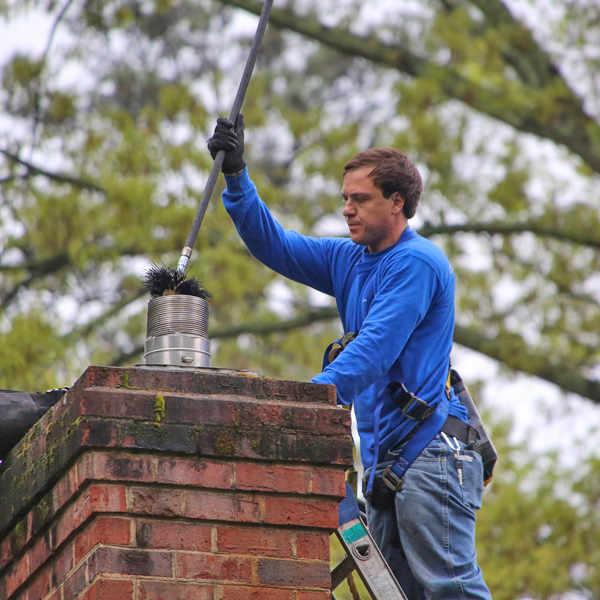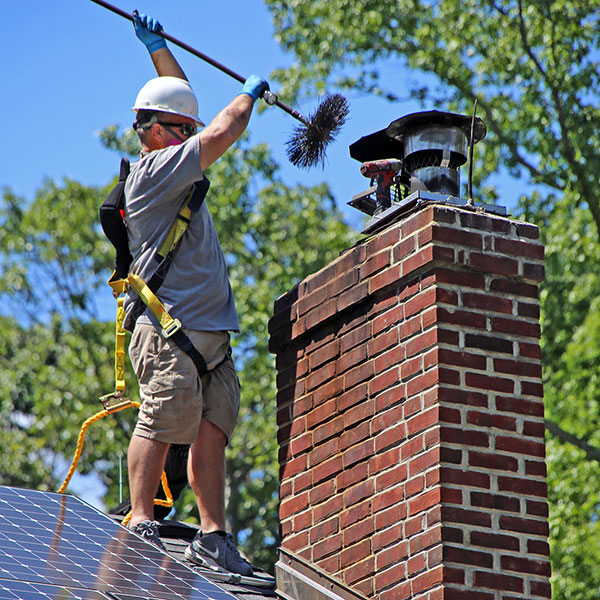Smokeshaft Upkeep with a Personal Touch: Chimney Clean San Jose Unleashed
Wiki Article
Clearing the Smoke: Why Chimney Cleansing Is Important for Fire Safety And Security
Clearing up the smoke is crucial to prevent smokeshaft fires and shield your enjoyed ones and residential or commercial property. This article will certainly discover the value of routine chimney cleansing, the dangers of creosote buildup, and the actions included in the professional smokeshaft cleansing process. Allow's delve into the globe of chimney cleansing and reveal the reasons why it is a crucial component of fire safety and security.The Importance of Normal Smokeshaft Cleansing
Routine chimney cleaning is of utmost importance for keeping fire safety in commercial and household residential or commercial properties. Smokeshafts play a vital role in expelling smoke and dangerous gases from structures, however in time, they can become obstructed with particles, creosote, and soot accumulation. This accumulation not only limits the airflow yet also boosts the risk of chimney fires.Among the primary reasons for normal smokeshaft cleansing is to stop the build-up of creosote, a highly combustible material that forms when wood is melted. Creosote can build up on the wall surfaces of the chimney and, if not gotten rid of, can fire up and cause a harmful chimney fire. These fires can swiftly infect the remainder of the structure, threatening the lives of owners and triggering considerable residential property damage.
Furthermore, normal smokeshaft cleaning helps to eliminate any type of clogs or blockages that might prevent the correct functioning of the chimney - Chimney Sweep San Jose. Particles such as branches, leaves, or animal nests can block the smokeshaft flue, avoiding the smoke from getting away and leading to a buildup of harmful gases inside the building
Comprehending the Risks of Creosote Accumulation
Creosote build-up presents a considerable risk to fire safety and security due to its extremely combustible nature. As smoke climbs through the smokeshaft, it cools down and condenses on the inner walls, developing layers of creosote.Among the major risks of creosote build-up is its flammability. Creosote is extremely combustible and can easily ignite with simply a little ember or trigger. As soon as sparked, it can promptly result in a smokeshaft fire, which can spread to the rest of the residence. These fires can be exceptionally harmful, triggering extensive damages to building and presenting a substantial danger to the security of owners.
Furthermore, creosote build-up can likewise restrict air flow in the chimney, minimizing the performance of the fireplace or range. This can cause poor combustion, bring about the release of damaging gases, such as carbon monoxide gas, into the home. Carbon monoxide gas is an anemic, odor free gas that can be deadly in high focus.
To stop the risks of creosote buildup, normal chimney cleansing is vital. Professional chimney moves have the proficiency and devices to remove creosote safely and extensively, reducing the danger of smokeshaft fires and making sure correct air flow. It is suggested to have the smokeshaft inspected and cleaned up at the very least as soon as a year, or more frequently if the fireplace or oven is made use of intensively.
Avoiding Smokeshaft Discharges Via Maintenance
To make certain fire safety and security and protect against smokeshaft fires, it is top article vital to focus on routine maintenance and maintenance of the smokeshaft system. Over time, creosote, soot, and debris can gather inside the smokeshaft, boosting the risk of an unsafe fire.One essential aspect of smokeshaft maintenance is normal chimney cleanings - Chimney Sweep San Jose. An expert smokeshaft move ought to be hired at least yearly to remove any kind of creosote, soot, and debris accumulation from the smokeshaft walls. This comprehensive cleansing procedure removes the prospective gas for a smokeshaft fire, effectively lowering the risk
Along with regular cleanings, it is necessary to deal with any type of problems or damages to the chimney system immediately. This may consist of changing or repairing damaged chimney liners, smokeshaft caps, or flue tiles. By ensuring the chimney system is in good functioning problem, the risk of a smokeshaft fire is more reduced.
Furthermore, homeowners ought to exercise safe burning practices to stop excessive creosote buildup. This includes utilizing only experienced fire wood, preventing burning garbage or other non-approved products, and keeping appropriate air movement by opening the damper fully while the fire is shedding.
Protecting Your Home and Enjoyed Ones
To successfully shield your home and enjoyed ones, it is vital to focus on smokeshaft cleansing and maintenance. A clean and properly maintained smokeshaft is not just important for stopping chimney fires, as gone over in the previous subtopic, but it additionally plays a vital role in protecting your home from other prospective hazards.Among the crucial benefits of routine smokeshaft cleansing is the prevention of carbon monoxide poisoning. Over time, particles, creosote, and residue can build up in the chimney flue, obstructing the passage of unsafe gases, consisting of carbon monoxide gas, which can be deadly when breathed in. By ensuring that your smokeshaft is completely cleaned and examined, you can considerably lower the threat of carbon monoxide poisoning and offer a much safer living atmosphere for your family members.
Moreover, a tidy chimney stops the risk of structural damage to your home. When chimneys are not effectively kept, dampness can seep right into the masonry, triggering it to deteriorate over time.
The Professional Chimney Cleansing Refine
A professional smokeshaft cleaning process involves a detailed inspection of the chimney and flue. An expert chimney sweep will carefully analyze the interior and exterior of the smokeshaft, examining for fractures, loose bricks, or damaged mortar.
During the cleaning procedure, it is necessary to shield the bordering locations from any type of dropping debris or residue. Expert chimney sweeper will certainly make use of decline towels and safety obstacles to make sure that your home remains intact and clean.
After the cleansing is finished, the sweep will certainly perform a last inspection to ensure that the smokeshaft and flue are free and tidy of any obstructions. They will likewise give you with redirected here a thorough report of their searchings for, consisting of any type of recommendations for repairs or upkeep that might be Visit Your URL needed.
Conclusion
To conclude, regular smokeshaft cleansing is vital for maintaining fire safety in homes. By recognizing the risks of creosote buildup and taking safety nets, such as regular upkeep, property owners can protect their homes and enjoyed ones from prospective smokeshaft fires. The expert smokeshaft cleaning procedure guarantees comprehensive elimination of creosote and other particles, decreasing the threat of fire risks. Overall, purchasing chimney cleansing is an essential step in the direction of making sure the safety of your home.
Report this wiki page